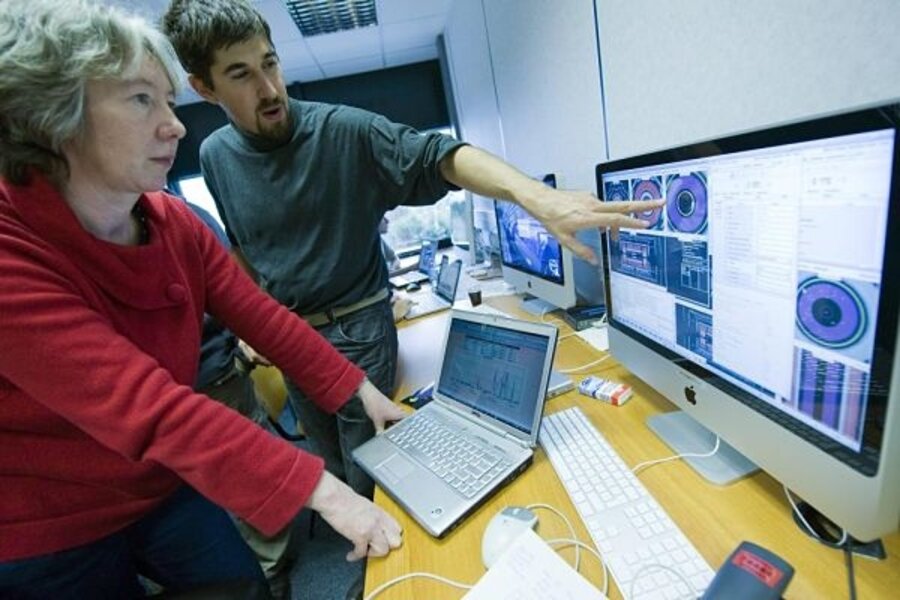Large hadron collider awakens after long repair outage
Physicists worldwide are performing a low-energy version of the happy dance now that the Large Hadron Collider is slowing coming back on line.
Over the weekend, scientists at Europe's high-energy physics lab, CERN, sent two beams of protons in opposite directions along the collider's 17-mile-around circular racetrack for the Lilliputian. They crossed the beams at two locations along the track where experimenters have some of their collision detectors.
Today they reported seeing their first collisions, although these remain a far cry from the number and energy of the collisions needed to accomplish the lab's ambitious research agenda. Scientists say they hope to begin smacking protons into one another in a serious way within the next 10 to 15 days.
Still, "cheers erupted with the first collisions," said Jurgen Schukraft, a spokesman for one of the experiments.
In a few days, teams will be ready "for some serious data-taking," added Andrei Golutvin, with another of the lab's experiment groups.
The $10-billion machine has been off line since September 2008, when an electrical problem heavily damaged it. Now that it's on, testing has progressed faster than officials had planned.
Once the LHC starts operating at much higher energies than it did last weekend, the Large Hadron Collider will be the world's most powerful particle accelerator -- smacking protons together at energy levels designed to mimic the earliest moments after the Big Bang, the enormous release of energy physicists and cosmologists say triggered the formation of the universe.
Research teams anticipate discovering a particle known as the Higgs boson, thought responsible for imparting mass to particles. In addition, experiments could yield clues about the make-up of so-called dark matter and help answer a range of other vexing physics questions.
You can read related stories about the collider and its science here and here.





